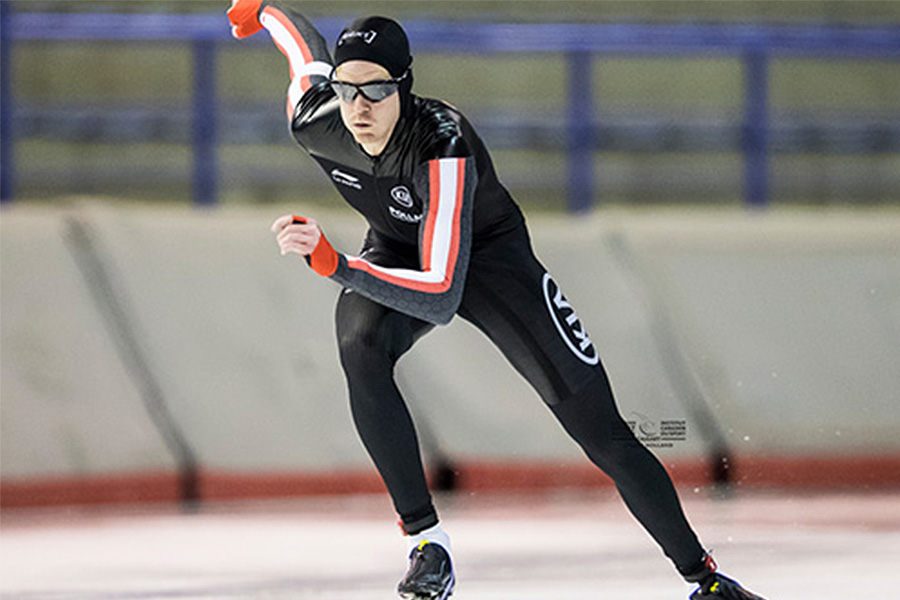
There is perhaps nothing more frustrating to an athlete than the experience of performing a certain way in training but not being able to find that same level of performance in competition. For Hamish Black, a Stage 4 speed skater (one stage before national team) who trains at CSI Calgary, this was just the state he found himself in halfway through last season.
Saddled with what he describes as ‘big expectations’, Black started just his second season in the sport last year hoping to make big gains. But it didn’t pan out the way he thought it would. “I realized there was a disconnect between training and racing,” he explains. “I was skating really well in practice but not racing at the same level. I was at a loss, it was a mental block.”
After a rink-side chat with Alayne Hing, Mental Performance Consultant at CSI Calgary, Hamish came to the realization that although he had trained his body to reach a high level, he hadn’t trained his mind. Despite coming from cross country skiing at age 26, Black still had work to do. “I had very little experience with performance at this level” he says.
Hing honed in on helping Black figure out his ideal performance state. This process involved developing self-awareness for his arousal levels. “Hamish is a positive, excited guy,” says Hing. “But he needed help to discover what is realistic for him at this point and to figure out how high arousal levels were hindering his performance.”
Hing took a unique approach by separating out the emotional factor and had Black use a number scale from ‘one’ to ‘ten’ to rate his arousal level. “A ‘one’ meant totally relaxed and a ‘ten’ was full panic,” says Hing. She worked with Black to determine what his ideal number was for optimal performance. This simple technique was a way for Black to check-in with himself and make an accurate self-assessment.
“We started tracking where he was at in training and competition and were able to chart his arousal state,” says Hing. At a ‘three’ Black felt focused, ready to go and had a clear head. The next step for Black was to learn some skills that would help him get to his ideal number. Hing helped him with breathing exercises, mental imagery and muscular relaxation techniques.
But the strategy that Black, a visual learner, has found the most useful is a simple piece of paper with a tracing of the oval and cues at specific spots on the track. He keeps the paper in his pocket and uses it when he feels the need to stay focused on the right things and regulate his emotions.
Hamish has seen a big improvement in his ability to rate and regulate his arousal state, which has translated into better performance. The biggest thing for him has been the change in the way he and his coach, Todd McClements, communicate about how he’s doing.
McClements says that it is essential for him to be using the same language as the athlete and sport psychologist because it allows for clear and concise communication. “The scale has been really effective and was quickly integrated into the daily training and race plans,” he says.
Black says the best part is that there is now a triangle of trust between Alayne, his coach and him. “Alayne helped me build the strategies and Todd is supportive and participates in that,” says Black. “Everybody’s on board.”
Canadian Sport Institute Calgary: @csicalgary
Written by Kristina Groves: @kngrover
Photo by: Dave Holland @csicalgaryphoto
14/06/17
